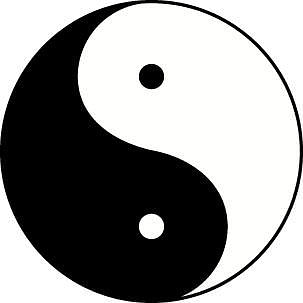

We tend to think of standing firm as good and yielding as bad. Note that neither yin nor yang can be characterized as good T’ai-Chi Ch’uan ( Ch’uan means fist) is a system of self-defense based on such a use of yin and yang, but learning it in that modality is not easy. Then you can use as much force as necessary. By not using force (yin), you can neutralize the attack and cause the opponent to be weakened (yin overcomes yang). Each person’s force escalates, and eventually the strongest wins.īut what if you are old, sick, injured, or under the ill effects of a pharmaceutical? Then you probably won’t be stronger than your opponent. If the opponent attempts to attack you by using a lot of force (yang) and you use force (yang) to repel the attack, the opponent will increase his force. Yet when attacking the hard and the strong, nothing can surpass it. Nothing in the world is softer and more supple than water, Moreover, since nothing is completely yin or completely yang, theįullest yin part contains a small circular region of yang, and vice versa. Conversely, yielding to a strong attack results in a stronger Note that the T’ai-Chi symbol portrays yin and yang as continuouslyĮvolving from one to another, as night into day. Both of these latter symbols portray a yin/yang inconsistency and are, therefore, incorrect. However, the two lower T’ai-Chi symbols (labeled upside-down) have yin (dark) at the top and yang (light) at the bottom. 2, the top, clockwise T’ai-Chi symbol (labeled right-side up) with yin (dark) at the bottom is a correct variation and is preferred by some. Here are three additional versions of the T’ai-Chi symbol: Clockwise,įig. Part represents yin, and the white part represents yang. Light is substantial andĭarkness is the absence of anything and, therefore, insubstantial. Instead, the black and white regions symbolize darkness and light, respectively. Similarly, the white part is the absence of anything and would seem to be Is the presence of something tangible, namely ink, it might seem that it shouldīe yang.

Since the black part of the T’ai-Chi symbol (when printed) The dark part is yin and the light part is yang. The T’ai-Chi Symbol, which portrays the balance of yinĪnd yang and their cyclic evolution.

Yang helps us to put these aspects in balance. Of yin and yang to be in harmony with nature.

Each action must have the right proportion There is a yin-yang range ofĮach action we take in any situation. The concept of T’ai Chi seems simple but actually takes much time to comprehend. To precision and may fail to realize that these categories are only the surface Viewing things in terms of yin and yang might seem to be a gross Note that in Macrobiotics philosophy, which originated in Japan, the yin and yang categorizations of some qualities are reversed from those of Chinese philosophy. The yin and yang aspects of some familiar qualities. Then it would be useful to determine which of those aspects are yin and which The reader might also examine the synopsis of categoriesĪt the beginning of a Roget’s Thesaurus, which organizes complementary aspects This concept pervades Chinese philosophy, language, and medicine.Įxamples of complementary pairs of some familiar qualities are The concept of Yin and Yang is a tool for achieving optimal balance in thought and action by understanding the range of extremes of any quality.


 0 kommentar(er)
0 kommentar(er)
